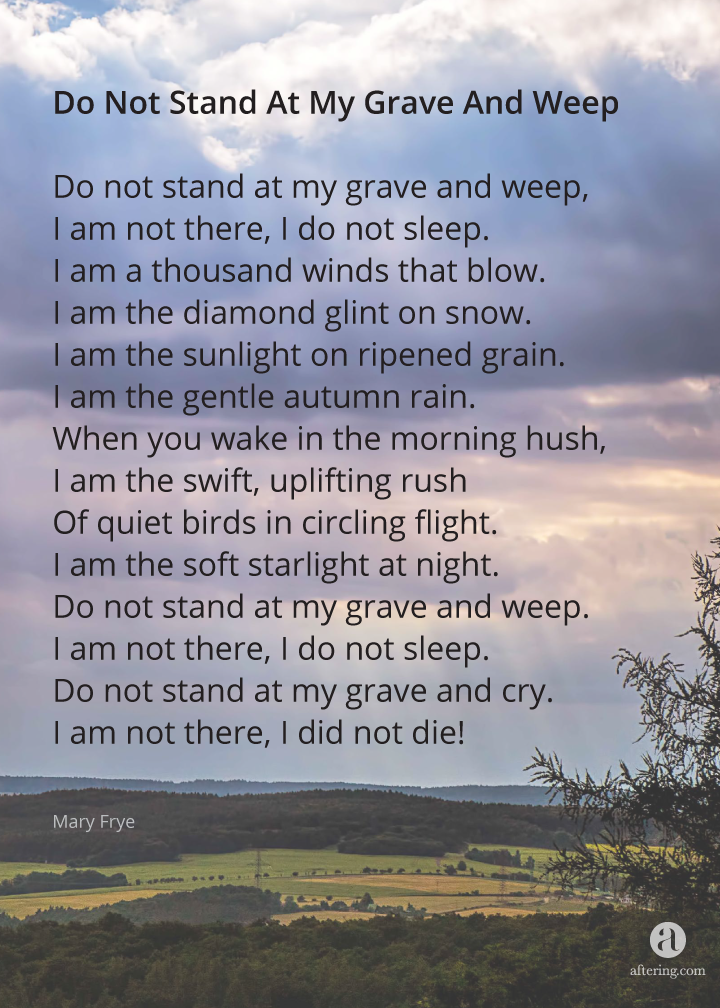- Do not stand at my grave and weep.
- I am not there. I do not sleep.
- I am a thousand winds that blow.
- I am the diamond glints on snow.
- I am the sunlight on ripened grain.
- I am the gentle autumn rain.
- When you awaken in the morning’s hush
- I am the swift uplifting rush
- Of quiet birds in circled flight.
- I am the soft stars that shine at night.
- Do not stand at my grave and cry;
- I am not there. I did not die.
“Do Not Stand at My Grave and Weep” is a poem written in 1932 by Mary Elizabeth Frye. Frye, who was living in Baltimore at the time, wrote the poem in 1932. She had never written any poetry, but the plight of a young German Jewish woman, Margaret Schwarzkopf, who was staying with her and her husband, inspired the poem. Margaret Schwarzkopf had been concerned about her mother, who was ill in Germany, but she had been warned not to return home because of increasing anti-Semitic unrest. When her mother died, the heartbroken young woman told Frye that she never had the chance to “stand by my mother’s grave and shed a tear”. Frye found herself composing a piece of verse on a brown paper shopping bag. Later she said that the words “just came to her” and expressed what she felt about life and death.
Frye circulated the poem privately, never publishing or copyrighting it. She wrote other poems, but this, her first, endured. Her obituary in The Times made it clear that she was the author of the famous poem, which has been recited at funerals and on other appropriate occasions around the world for 60 years.
The poem was introduced to many in the United Kingdom when it was read by the father of Stephen Jeffrey Cummins, a soldier killed by a bomb in Northern Ireland. The soldier’s father read the poem on BBC radio in 1995 in remembrance of his son, who had left the poem among his personal effects in an envelope addressed ‘To all my loved ones’. The authorship of the poem was established a few years later after an investigation by journalist Abigail Van Buren.
The poem is common reading for funerals.









